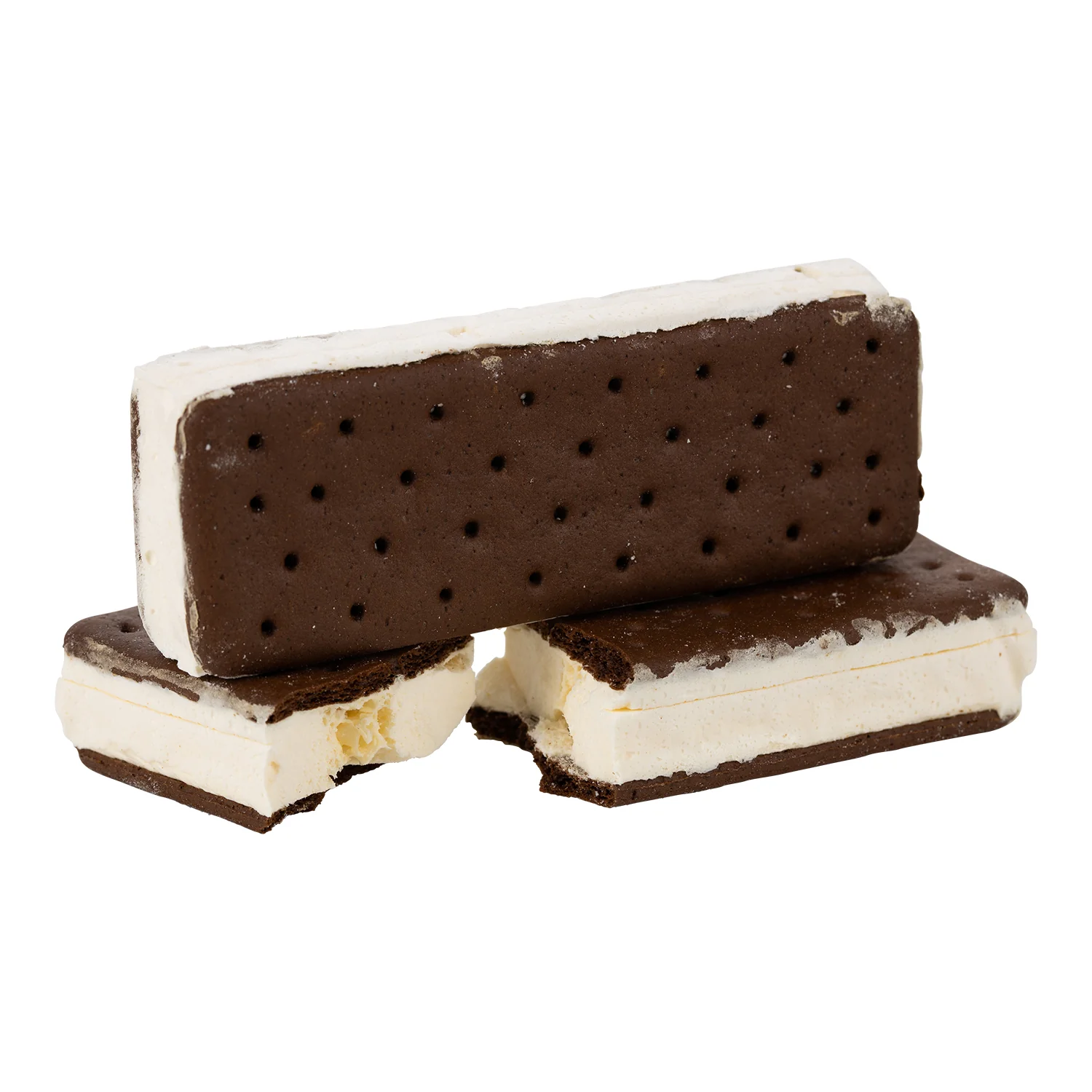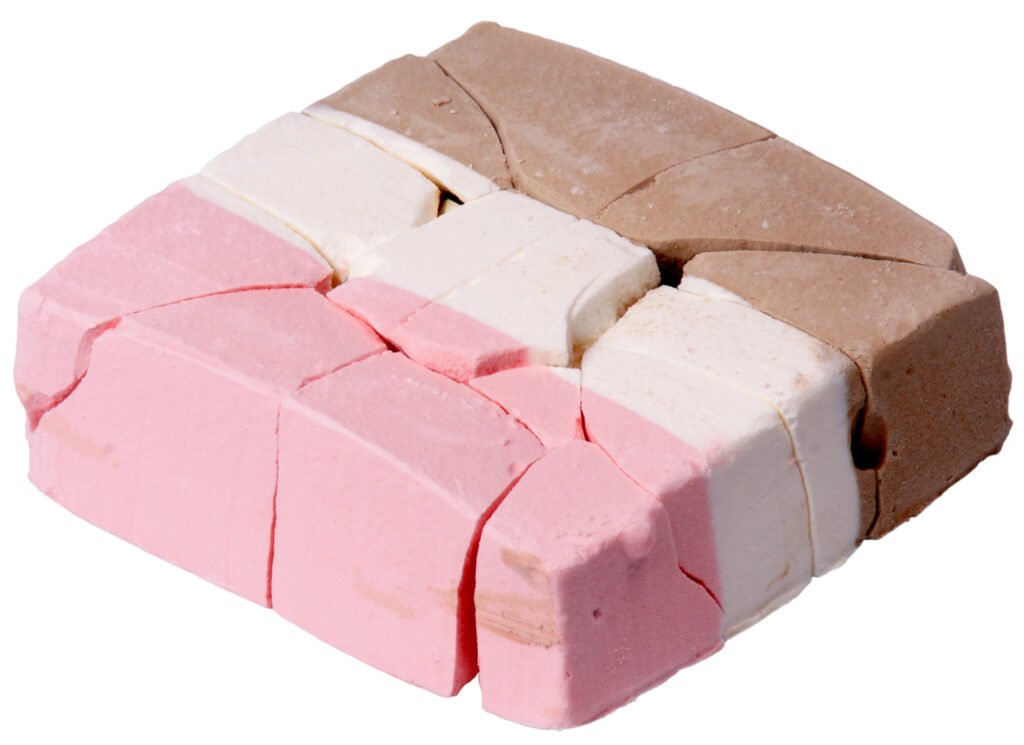
Freeze-Dried Ice Cream
Astronaut dried ice cream, commonly known as freeze-dried ice cream, is a unique confectionery that has captured the imagination of both space enthusiasts and food lovers. Unlike traditional ice cream, which is creamy and requires freezing, freeze-dried ice cream is processed to remove its moisture content through a process called lyophilization, resulting in a crunchy, lightweight snack. This ice cream maintains its original flavors and can be enjoyed without refrigeration.
Overview of Its Popularity and Unique Qualities
This unusual treat has gained significant popularity, particularly among children and adults who are fascinated by space exploration. Its novelty factor, combined with its intriguing history and unique texture, makes it a sought-after item in various settings, from science museums to camping trips. Additionally, freeze-dried ice cream offers the thrill of experiencing a snack once reserved for astronauts, bridging the gap between culinary delight and the mysteries of outer space.
Historical Background
Development by Whirlpool Corporation for NASA
The journey of astronaut dried ice cream begins in the 1960s when the Whirlpool Corporation was tasked with developing a lightweight, non-perishable food source for NASA’s Apollo missions. With the need for astronauts to have nutritious and enjoyable meals during their missions, freeze-dried ice cream was conceived as an ideal solution.
Intended Use for Apollo Missions, But Never Actually Used
While the idea was innovative, astronaut dried ice cream was never utilized in the Apollo missions. Concerns regarding its texture and potential issues with consumption in microgravity led to its exclusion from the final menu. However, the concept remained intriguing, and the product eventually found a niche market among consumers interested in space and adventure.
Production Process
Explanation of Freeze-Drying (Lyophilization)
The process of creating astronaut dried ice cream involves freeze-drying, or lyophilization, a method that preserves food while maintaining its flavor and nutrients. The process removes moisture from food by first freezing it. Then reducing the surrounding pressure to allow the frozen water to sublimate directly from ice to vapor.
Step-by-Step Process: Freezing, Vacuum Chamber, Sublimation, and Packaging
- Freezing: The ice cream mixture is first made in a traditional manner, combining cream, sugar, and flavorings. Once prepared, it is frozen at very low temperatures, usually below -40°F (-40°C).
- Vacuum Chamber: The frozen ice cream is then placed in a vacuum chamber. Here, the pressure is lowered, allowing the ice to sublimate. This step is critical as it transforms the ice directly into vapor, bypassing the liquid state, which preserves the structure of the ice cream.
- Sublimation: During sublimation, the moisture is removed, resulting in a dry, crumbly texture. This process can take several hours, ensuring that the ice cream is adequately dehydrated.
- Packaging: Once the sublimation is complete, the freeze-dried ice cream is packaged in airtight containers to prevent moisture absorption, ensuring a long shelf life. The packaging often includes a nitrogen flush to displace oxygen and further protect the product.
Nutritional Information
Comparison with Traditional Ice Cream (Calories, Fat Content)
When comparing astronaut dried ice cream to traditional ice cream, several nutritional differences emerge. Traditional ice cream is creamy and rich, typically containing significant amounts of sugar, fat, and calories. For example, a typical serving of regular ice cream may contain around 150-250 calories, with about 7-15 grams of fat.
In contrast, freeze-dried ice cream offers a lower-calorie alternative. A serving usually contains approximately 100-120 calories, with fat content varying depending on the brand and flavor. The freeze-drying process removes much of the moisture but retains the essential flavors, making it a lighter snack option.
Benefits of Freeze-Dried Ice Cream (Long Shelf Life, No Refrigeration Needed)

One of the most significant benefits of astronaut dried ice cream is its long shelf life. When stored in a cool, dry place, freeze-dried ice cream can last up to two years or more without refrigeration. This attribute makes it an ideal choice for emergency preparedness kits, camping trips, and outdoor activities, where access to refrigeration may be limited.
Moreover, the absence of moisture means that freeze-dried ice cream does not spoil easily, allowing consumers to enjoy it at their convenience.
Space Use and Popularity
Misconceptions About Its Use in Space Missions
Despite its association with space travel, there are many misconceptions about astronaut dried ice cream. A common myth is that it was a staple food for astronauts during their missions. In reality, while it was developed for space use, it was never actually consumed by astronauts in orbit. This misunderstanding has only fueled its popularity, as people are drawn to the idea of eating what astronauts might have eaten.
Mention of Astronauts’ Opinions, Including Mike Massimino’s Critique
Some astronauts have expressed their thoughts on freeze-dried ice cream. For example, astronaut Mike Massimino, who flew on two Space Shuttle missions. Noted that while the idea was fun, the texture of freeze-dried ice cream could be off-putting for some. His critique highlights the challenges of consuming certain foods in microgravity, where liquids and solids behave differently than on Earth.
Nevertheless, many astronauts have shared fond memories of enjoying various foods, including desserts, during their missions, further enhancing the allure of space food for the general public.
Usage in Science Museums and Gift Shops
Astronaut dried ice cream has become a popular item in science museums and gift shops, where it is marketed as a novelty item. Children and adults alike are drawn to the idea of tasting a treat associated with space travel. These venues often offer freeze-dried ice cream as part of educational exhibits, highlighting the science behind space food and its preparation.
Additionally, its inclusion in museum gift shops allows visitors to take home a piece of the space experience, further solidifying its status as a fun and educational snack.
Consumer Market
Popularity in Camping and Outdoor Activities
Astronaut dried ice cream has found a strong market in outdoor and adventure activities. Campers, hikers, and backpackers appreciate the lightweight. Compact nature of freeze-dried ice cream, making it easy to pack for trips. Its long shelf life ensures that it can be stored for extended periods without the need for refrigeration. Making it a practical choice for outdoor enthusiasts.
The unique texture and flavors also appeal to those seeking a treat that stands out from typical camping snacks. Freeze-dried ice cream offers a nostalgic connection to childhood and space exploration, making it an attractive option for families and adventurers alike.
Brands That Offer Astronaut Ice Cream (e.g., Astronaut Foods)
Several brands have emerged in the market to offer astronaut dried ice cream, with “Astronaut Foods” being one of the most well-known. This brand provides various flavors, including classic options like chocolate, vanilla, and strawberry, as well as more unique flavors.
Other brands have also entered the market, catering to different tastes and preferences, further expanding the reach of freeze-dried ice cream. As the demand for novelty snacks grows, more options are likely to emerge, appealing to a wide range of consumers.
Fun Facts and Figures
Storage and Shelf Life Details (Up to 24 Months)
One of the most intriguing aspects of astronaut dried ice cream is its impressive shelf life. When stored properly, freeze-dried ice cream can remain fresh for up to 24 months. This longevity is primarily due to the removal of moisture during the freeze-drying process, preventing the growth of bacteria and mold.
Unique Selling Points: Lightweight, Easy to Transport
The lightweight and compact nature of freeze-dried ice cream is another significant selling point. It is easy to transport, making it an ideal snack for outdoor activities, road trips, and travel. Additionally, the novelty of eating a space-themed treat adds to its appeal .Making it a fun conversation starter among friends and family.
Conclusion
Summary of Its Appeal to Both Consumers and Space Enthusiasts
In summary, astronaut dried ice cream is more than just a quirky snack. It represents a fascinating intersection of food science, space exploration, and nostalgia. Its unique production process, combined with its long shelf life and lightweight nature. Makes it an attractive option for various consumers, from space enthusiasts to outdoor adventurers.
Encouragement for Trying Astronaut Ice Cream as a Novelty Treat
For those who have yet to experience the delight of astronaut dried ice cream, it is worth trying at least once. Whether enjoyed during a camping trip, purchased at a museum gift shop. Shared among friends, this unique treat offers a taste of space exploration and a fun way to connect with the wonders of the universe.
For more insightful blogs visit our website







